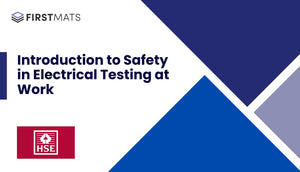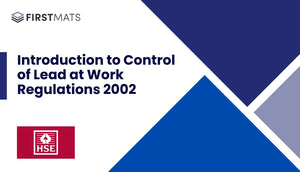Article Index:
Executive Summary: HSE Report on Human Health and Social Work Activities Statistics in Great Britain, 2022
This executive summary provides key findings from the Health and Safety Executive's report on human health and social work activities in the UK for the year up to March 2022. The full report contains a wealth of statistics and insights into the health and safety conditions in the health and social work sectors.
303,000 workers suffering from work-related ill health
According to the Labour Force Survey (LFS), an estimated annual average of 303,000 workers suffered from work-related ill health during the period of 2019/20-2021/22. This number accounts for both new and long-standing cases. Trends in recent years prior to the coronavirus pandemic showed a downward trend, but the results were higher during the years affected by the pandemic (Source: LFS estimated annual average 2019/20-2021/22).
0 fatal injuries to workers in 2021/22
The report indicates that there were no fatal injuries to workers in 2021/22. Over the five-year period from 2017/18-2021/22, the annual average was 1 fatality. However, there were 18 fatal injuries to members of the public during the same time, with an annual average of 21 such fatalities (Source: RIDDOR, 2021/22).
82,000 non-fatal injuries to workers each year
Across the three-year period from 2019/20-2021/22, there were approximately 82,000 non-fatal injuries to workers each year. Prior to the coronavirus pandemic, the rate of these injuries showed a downward trend, however, the rate did not significantly change during the pandemic years (Source: LFS, estimated annual average 2019/20-2021/22).
14% of the workforce in Great Britain is in the Human health and social work sector
The Human health and social work sector accounts for a substantial 14% of the workforce in Great Britain. The development of this sector and its influence on the national economy and public health make its health and safety statistics particularly significant. These stats were affected by the coronavirus pandemic and thus must be interpreted with caution when comparing across time periods (Source: Annual Population Survey, 2021).
50% of ill-health cases were stress, depression or anxiety
Out of the estimated 303,000 work-related ill health cases, 50% were stress, depression, or anxiety. This reflects the high-intensity nature of work in the health and social care sectors (Source: LFS, estimated annual average 2019/20-2021/22).
22% of all ill health in the sector relates to Musculoskeletal Disorders
There were an estimated 68,000 work-related cases of musculoskeletal disorder which amounted to 22% of all ill health in this sector (Source: LFS, estimated annual average 2019/20-2021/22).
152,000 work-related cases of stress, depression or anxiety
There were an estimated 152,000 work-related cases of stress, depression, or anxiety, which accounted for 50% of all ill health in the sector (Source: LFS, estimated annual average 2019/20-2021/22).
High prevalence of contact dermatitis among Nurses and Medical Practitioners
The rate of contact dermatitis is 5.3 times higher among nurses (14.4 per 100,000 workers) and 3.6 times higher among medical practitioners (9.9 per 100,000 workers) compared to all occupations (2.7 per 100,000 workers). The sector's rate is 2.1 times that for all industries (5.8 compared to 2.7 per 100,000 workers) (Source: THOR (EPIDERM) 2017-2019).
82,000 cases of non-fatal work-related injury
An estimated 82,000 cases of non-fatal work-related injuries were reported in the Human health and social work activities sector. 38% of these cases involved over three days and 30% over seven days of absence (Source: LFS, estimated annual average 2019/20-2021/22).
Total economic cost estimated at £3,680 million
The total economic cost of workplace injury and ill health in 2019/20 is estimated at £3,680 million, accounting for 20% of the total cost of all work-related ill health and injury (£18.7 billion) (Source: HSE Costs to Britain, 2019/20).
Approximately 6 million working days lost each year
Approximately 6 million working days (full-day equivalent) were lost each year due to workplace injury (16%) and work-related illness (84%) in the Human health and social work activities sector. This is equivalent to around 1.8 working days lost per worker, statistically significantly higher than the all-industry level (1.0 days) (Source: LFS, estimated annual average 2018/19-2019/20, 2021/22).
Conclusion
The HSE's report provides invaluable insights into the health and safety conditions in the Human health and social work sectors in Great Britain. While there are positive aspects, such as the decline in non-fatal injuries, there are areas that need urgent attention, such as the high prevalence of stress, depression, anxiety and musculoskeletal disorders. The industry needs to continuously work towards improving the working conditions for its workers to ensure their health and safety.







